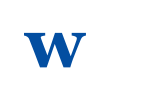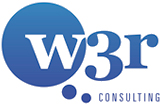How does your organization go about turning your healthcare data into a true asset? Proper data governance is the first major step to take. The usability, accuracy, and security of data across the entirety of a payor organization depends primarily on the strength of the overall data governance practices and processes. More than just part of your compliance strategy, there is a wide range of additional benefits for your organization. Here are three you need to consider.
1.) Protecting Your Proprietary Data
Under the 21st Century Cures Act, the federal government mandated the enhanced exchange of electronic health information among providers, payors, and individual members. The law is explicit about the strict prohibition of healthcare organizations of information blocking or taking “any action that may inhibit the appropriate exchange, access, and use of electronic health information.”
By using data governance best practices, payors can identify issues with quality and communication across a variety of systems, standardizing formats and simplifying processes to improve the transparency in authorized data exchanges. Yet that is only the beginning. Healthcare payors can also use the same data governance practices to shield themselves from oversharing information with their competitors.
Here’s an example. One of our payor clients, operating under their own internal mandates, wanted to gain a better understanding of the data leaving their organization during the data exchange cycle. By enacting enhanced data governance practices, the integrity and availability of data increased, allowing them to track requests in real-time and provide only requisite information. Most importantly, they were able to control the flow of information about their pricing and proprietary business practices while retaining exclusive information.
2.) Simplifying Organizational Collaboration
In recent years, healthcare payors have recognized the value of organizational collaboration. Establishing mutual quality standards and data definitions across departments is the first major step toward greater productivity, increased cost-effectiveness, and enhanced member experiences.
The challenge is that interdepartmental coordination at this level requires intentional action. Without top-down involvement, most departments will lapse into data silos, developing their own data systems, formats, and standards that obstruct cooperation and collaboration. This is where following data governance best practices delivers results.
Consider this hypothetical situation: Top executives across a healthcare payor are discussing ways to improve member satisfaction, but each department disagrees about the specifics of customer demographics, production costs, and other major KPIs. Their inability to use the same terminology prevents stakeholders from agreeing on what’s happening, let alone what action needs to be taken. Before they can make meaningful decisions, they need to evaluate and implement:
- The integrity and availability of data assets
- The efficiency of data processes
- The sophistication of the technology
- The definition of critical data elements
- The data policies, standards and rules
Without taking those steps, their organization will continue to remain siloed and the scope of progress will be hindered across departments.
3.) Better Member Experience
Nowadays, plan members expect a higher standard of service, accustomed to the convenience and personalization of omnichannel consumer interactions and the greater participation of the payor industry in care outcomes. Organizations that are truly able to give policyholders a remarkable experience by those measurements create a consistent and reliable representation of each member across systems and data. Governance ensures the right data points are on the table, but it’s only through proper data management that those data points can lead to a clear picture.
With a single point of accountability, payors can create consistent standards around the collection and handling of data assets, enhancing the comprehensiveness of member information and personalized care outcomes. Organizations with weak data governance gather data at inconsistent levels – some with thorough records of key customer attributes, demographics, and medical history, while others focus on rudimentary information. Creating a framework of data governance and a sense of data ownership ensures that all departments have essential data to pull from as they create solutions and run reports.
Moreover, better data governance grants a better sense of your strengths and weaknesses from a member engagement and interaction standpoint. The transparency generated by a refined data strategy and clear ownership can provide clarity across your customer interactions. Using data-driven practices, your organization can determine:
- The effectiveness of your communication channels
- The ease of healthcare records and claims accessibility
- The performance of your wellness program
With proper data governance that spans your organization, you can ensure that when policyholders provide information on one channel, it can be defined accurately and consistently across them all, suggesting quality and reliability in reporting. This can help to ensure that Customer Satisfaction (CSAT) continues to improve for your omnichannel customer service.
The Start of Even Greater ROI
Data protection, improved collaboration, and enhanced member engagement are just the beginning of the opportunities available. Better data governance in healthcare organizations is a catalyst for a broad spectrum of benefits ranging from enhanced cybersecurity to incisive big data analytics. In a sense, data governance is the gift that keeps on giving, providing an increased ROI now and into the future, when it’s implemented with intention and strategy in mind.
Data governance in healthcare is changing the game, and your organization needs to evolve with it. Learn how one of our customers advanced their operations with better data governance.
[/fusion_builder_column][/fusion_builder_row][/fusion_builder_container]


